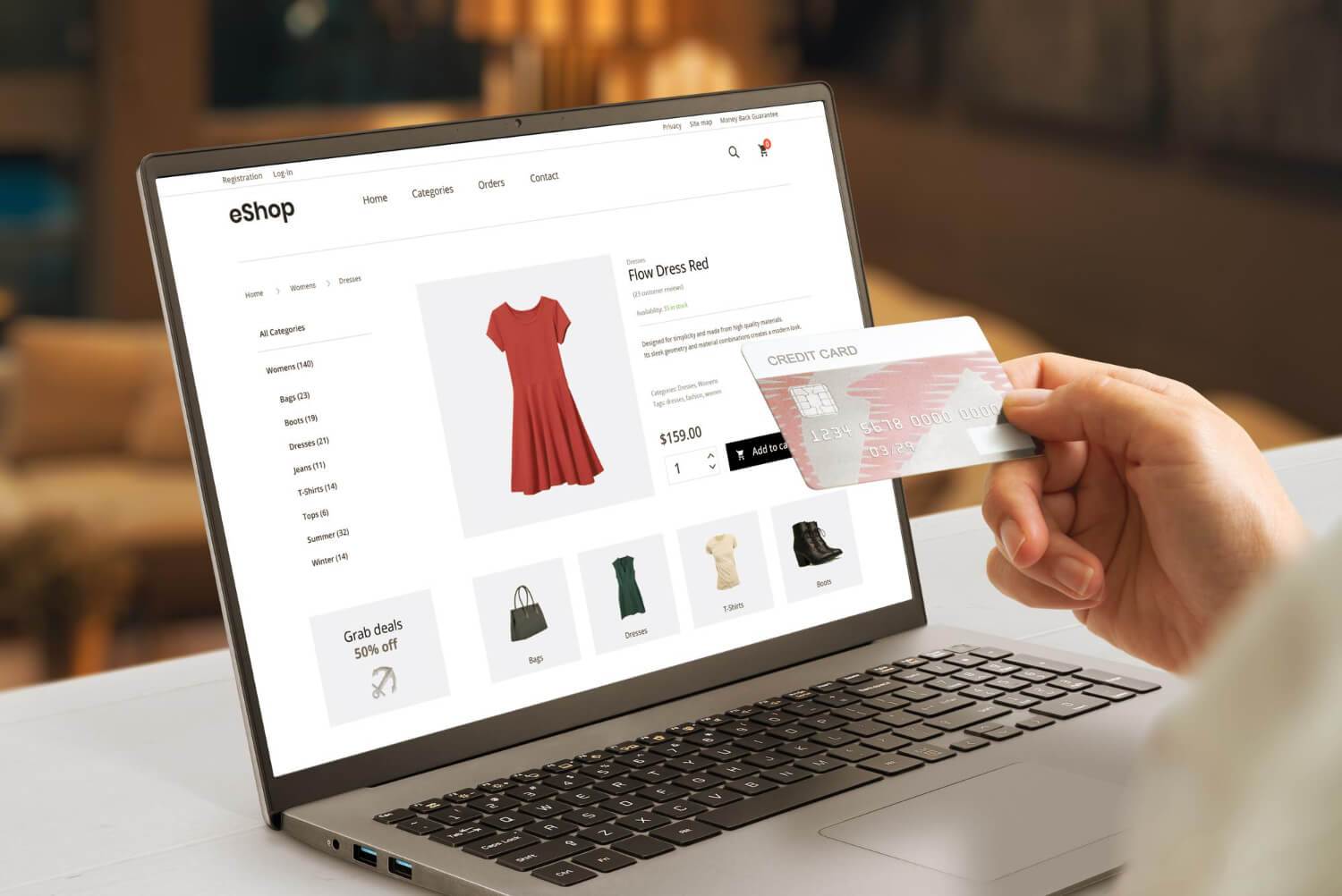In today’s digital landscape, e-commerce has become a go-to platform for sellers looking to expand their reach and increase sales. While having your online store is an excellent first step, there’s another decision to ponder: should you sell on multiple online platforms?
The idea can be both exhilarating and overwhelming. In this article, we’ll explore the advantages, drawbacks, and other factors you need to consider before taking the plunge.
Advantages
Increased Visibility: Selling on various platforms allows your products to be seen by a broader audience. Websites like Amazon, eBay, and Etsy have millions of active users daily. By positioning your product on these platforms, you are leveraging their user base to gain extra visibility.
Diversification of Revenue Streams: Having multiple avenues for income can make your business more resilient. If one platform performs poorly, you can compensate with better sales from another. It provides a safety net, so to speak.
Built-in Marketing Tools: Most established platforms offer marketing tools that can help boost your sales. Amazon’s “Fulfilled By Amazon” (FBA) program, for example, handles shipping, customer service, and returns. It frees you from logistical hassles and enables you to focus more on marketing and product development.
Market Testing : Being present on different platforms can provide valuable insights into market trends and consumer behavior. You can experiment with different pricing strategies, for instance, to find what attracts more buyers.
Drawbacks
Increased Operational Complexity: Managing multiple platforms is not a walk in the park. You’ll need to track inventories, process orders, and handle customer service across all platforms, which can get complicated. Software solutions like multichannel management systems can help, but they come at a cost.
Fees and Commissions: Each platform will take a slice of your pie. Amazon and eBay, for example, charge listing fees and take a percentage of each sale. These expenses can add up, reducing your overall profit margins.
Branding Limitations: Most of these platforms prioritize their branding over yours. That means you’ll have less control over how your products are presented, which can affect your brand image in the long run.
Competition: You’re not the only one with the idea to use multiple platforms. Your competition is likely doing the same, and sometimes they could be more visible than you, which can affect your sales negatively.
Important Considerations
Consistency is Key: When selling on multiple platforms, keeping your branding and product information consistent is crucial. Any inconsistency can confuse customers and may affect your credibility.
Inventory Management: Keeping track of your inventory across multiple platforms is critical to avoid overselling. Automated systems can help you sync inventory levels in real-time.
Analytics and Reporting: Each platform will offer some sort of analytics. However, collating this data into a single, comprehensive view can be a challenge. Look for software that can integrate analytics from various platforms to give you a unified understanding of your business performance.
Legalities: Make sure you understand the terms of service for each platform. Breaking any rule, even unintentionally, can result in penalties or even getting kicked off the platform.
Selling on multiple online platforms can be beneficial but comes with its own set of challenges. It can expand your reach, diversify your revenue streams, and offer built-in marketing tools. However, it also makes operations more complex, involves multiple fees, and imposes branding limitations.
Before diving in, it’s essential to weigh the pros and cons and assess whether your business has the resources to manage multiple platforms effectively. Use this guide as a starting point, conduct further research, and consider consulting with e-commerce experts to make an informed decision. With the right strategy, selling on multiple platforms can indeed become a significant growth driver for your business.
Additional Factors to Consider
Customer Experience: When you sell on multiple platforms, you’re essentially putting your product in different ‘environments.’ Each platform has its own user experience, customer reviews, and ratings systems.
Your challenge is to ensure that customers get the same level of quality and service, regardless of the platform they use. This might mean dedicating resources to manage customer service across these platforms, which could require considerable effort and time.
Seasonal Trends: Some platforms may perform better during specific seasons or events. For example, handmade or personalized items may see higher sales on Etsy during the holiday season, while tech gadgets might perform better on Amazon during Black Friday sales. Being on multiple platforms allows you to leverage these seasonal trends to your advantage.
Platform-Specific Features: Platforms like eBay allow for auction-style selling, while Amazon is more geared towards ‘Buy it Now’ transactions. Etsy is tailored for handmade or vintage items. Understanding the unique features of each platform can enable you to tailor your selling strategy accordingly.
Geographic Reach: Different platforms may have varying popularity in different countries. For instance, Amazon is more prominent in the U.S., whereas Alibaba dominates in China. If you’re aiming for a global audience, multi-platform selling could help you gain a more diverse customer base.
Technology Requirements: Managing multiple platforms can get technically complicated. Inventory, pricing, and data analysis might require the use of specialized software or APIs to keep everything streamlined. This requires not just a financial investment but also the tech-savvy to integrate and manage these systems.
Best Practices for Multi-Platform Selling
Start Slow: Don’t try to sell on all platforms at once. Begin with one or two and then gradually expand as you get the hang of it.
Use a Centralized Inventory System: This will help you manage stock levels across all platforms in real-time.
Standardize Product Information: Make sure that product titles, descriptions, and images are consistent across all platforms.
Monitor and Adapt: Keep a close eye on your performance metrics on each platform. Be ready to adapt your strategies based on what the data tells you.
Customer Service: Offer the same level of customer service across all platforms. This helps in building a unified brand image.
Legal Compliance: Ensure you adhere to each platform’s policies and terms of service.
Regular Updates: The e-commerce landscape is always changing. Stay updated with any changes in platform policies, fees, or algorithms, and adjust your strategies accordingly.
Selling on multiple online platforms is not a one-size-fits-all strategy. It has its benefits and challenges, and what works for one seller may not work for another. The key is to understand your business needs, capabilities, and long-term goals. Do your research, possibly consult with experts, and use this information to formulate a strategy that works best for you.
Multi-platform selling can offer excellent opportunities for growth and revenue diversification. However, it’s essential to approach it with a well-thought-out strategy and the readiness to invest in additional resources for management and operations. When done right, the pros can definitely outweigh the cons, making it a lucrative avenue for expanding your online business.
Top 10 Online Platforms to Sell Your Products
If you’ve decided to take the multi-platform route, the next logical step is to decide which platforms best suit your business needs. Here’s a rundown of the top 10 online platforms where you can sell your products, each with its unique features and target markets.
- Amazon
Audience: Global
Best For: General merchandise
Unique Features: Amazon Prime, FBA, and a range of advertising tools
Amazon is a behemoth, ideal for almost any type of product. Its built-in customer base is gigantic, making it an attractive option for sellers looking for instant reach.
- eBay
Audience: Global
Best For: Collectibles, used items, unique products
Unique Features: Auction-style listings, international shipping options
eBay is an excellent platform for sellers looking to auction off items or sell unique or used products. Its international reach is also a plus point for sellers looking to go global.
- Etsy
Audience: Global, with a focus on the U.S.
Best For: Handmade, vintage, and unique items
Unique Features: Community-centric, strong focus on unique and crafty products
Etsy is the go-to platform for handmade and crafty items. If your business fits this niche, Etsy is probably your best bet.
- Shopify
Audience: Global
Best For: Those looking to build a standalone online store
Unique Features: Complete customization, various integrations
Shopify allows you to create your online store, offering greater control over your branding and customer experience.
- Alibaba/AliExpress
Audience: Global, with a focus on Asia
Best For: Wholesale and B2B
Unique Features: Large volumes, sourcing options
If you’re in the business of selling in bulk or targeting an Asian market, Alibaba or AliExpress could be ideal.
- Walmart Marketplace
Audience: Mostly U.S.
Best For: General merchandise
Unique Features: Integration with physical Walmart stores
Walmart Marketplace allows you to tap into the customer base of one of the largest retailers in the U.S.
- Jet
Audience: U.S.
Best For: Household items, electronics, groceries
Unique Features: Dynamic pricing
Jet offers a unique pricing model that rewards consumers for making more sustainable choices, like opting out of returns.
- Newegg
Audience: Global, focus on North America
Best For: Electronics and tech items
Unique Features: Tech-savvy audience, robust rating system
Newegg is a haven for tech enthusiasts looking for components, software, and electronics.
- Bonanza
Audience: U.S. and international
Best For: Unique, collectible items
Unique Features: No listing fees, lower final value fees
Bonanza is a smaller, community-focused platform that offers lower fees and a curated experience.
- Rakuten
Audience: Global, focus on Japan
Best For: A variety of products
Unique Features: Loyalty program, cross-promotion opportunities
Rakuten is a Japanese e-commerce giant that offers sellers a way to cross-promote their products on other services like Rakuten TV.
Expanding your business to sell on multiple online platforms can be both a lucrative and challenging endeavor. While diversification has its advantages, such as increased visibility and resilience, it also requires a more complex operational strategy, including a focus on inventory management, customer experience, and branding. Before taking the plunge, weigh the pros and cons, assess your resources, and be ready to invest in software tools to keep everything running smoothly.
Coupled with the detailed insights into some of the top platforms to consider, this guide aims to provide you with the essential knowledge to make an informed decision on multi-platform selling. By understanding your business needs and doing thorough research, you can identify which platforms align best with your products and target audience. Happy selling!










